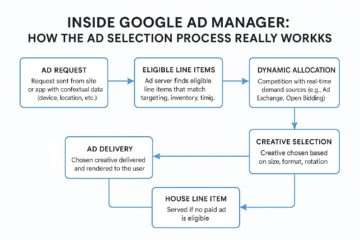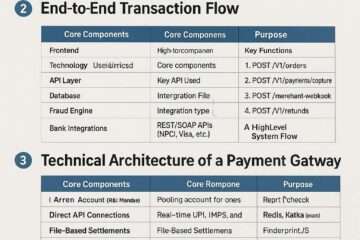

In the rapidly evolving landscape of digital advertising, Digital Out-of-Home (DOOH) and Connected TV (CTV) have emerged as two powerful channels that allow brands to connect with audiences in unique and impactful ways. While both leverage advanced technology and programmatic buying to deliver targeted, engaging ads, they differ significantly in their environments, audience interactions, and strategic applications. This article explores the major differences between DOOH and CTV, their niche segments, and how these channels are poised to expand programmatically in the future.
Understanding DOOH and CTV
Digital Out-of-Home (DOOH)
DOOH refers to digital displays and screens placed in public spaces such as shopping malls, airports, bus stops, billboards, grocery stores, gyms, and other high-traffic areas. These screens deliver dynamic, visually engaging advertisements that can be updated in real-time and tailored to specific locations, times, or audience behaviors. DOOH evolved from traditional out-of-home (OOH) advertising (e.g., static billboards) by incorporating digital technology, interactivity, and data-driven targeting.
Key Characteristics of DOOH:
- Environment: Public, real-world spaces where consumers are on the move.
- Audience Reach: One-to-many, targeting groups of people in high-traffic areas.
- Ad Format: Primarily video, static images, or dynamic content with high visual impact.
- Interactivity: Can include touch screens, QR codes, or proximity-based triggers for engagement.
- Targeting: Location-based, contextual (e.g., weather, time of day), and demographic-based.
Connected TV (CTV)
CTV refers to internet-connected devices that stream video content on televisions, such as smart TVs, streaming devices (e.g., Roku, Amazon Fire TV, Apple TV), and gaming consoles. CTV advertising delivers ads within streaming services, either through ad-supported platforms (e.g., Hulu, Peacock) or premium publishers (e.g., Netflix, Disney+). It is often associated with over-the-top (OTT) content delivery, bypassing traditional cable or satellite TV.
Key Characteristics of CTV:
- Environment: Private, in-home viewing on TV screens.
- Audience Reach: One-to-one or household-level targeting, with a focus on individual viewer preferences.
- Ad Format: Primarily video ads (15- or 30-second spots) that may be non-skippable or interactive.
- Interactivity: Includes shoppable ads, QR codes, or direct engagement within streaming platforms.
- Targeting: Behavioral, demographic, and interest-based, leveraging granular user data from streaming platforms.
Major Differences Between DOOH and CTV
The differences between DOOH and CTV stem from their distinct environments, audience engagement models, targeting capabilities, and measurement approaches. Below is a detailed comparison across key dimensions:
1. Environment and Context
- DOOH: Operates in public spaces where consumers are on the move, such as transit hubs, retail stores, or urban centers. Ads are designed to capture attention in fleeting moments, often with high dwell times in places like waiting areas or elevators. DOOH thrives on context, delivering ads relevant to the location, weather, or time of day (e.g., an iced coffee ad near a beach in summer).
- CTV: Operates in private, in-home environments where viewers are engaged in lean-back, intentional viewing experiences. CTV ads are delivered during streaming content, aligning with the viewer’s chosen programming or interests. The controlled, premium content environment ensures brand safety and high engagement.
Key Difference: DOOH targets consumers in real-world, transient settings, while CTV reaches audiences in the comfort of their homes during focused viewing sessions.
2. Audience Reach and Engagement
- DOOH: A one-to-many medium that reaches broad audiences in public spaces. It excels at creating mass awareness and brand recall due to its visibility in high-traffic areas. Engagement is often passive but can be enhanced with interactive elements like touch screens or QR codes. For example, 52% of viewers with smartphones have taken action (e.g., visited a website) after seeing a DOOH ad.
- CTV: A one-to-one or household-level medium that delivers personalized ads based on viewer data. CTV ads have high engagement rates, as viewers are more likely to watch ads to completion in a distraction-free environment. Interactive formats like shoppable ads or QR codes further boost engagement.
Key Difference: DOOH prioritizes broad reach and visibility, while CTV focuses on personalized, high-engagement interactions.
3. Targeting Capabilities
- DOOH: Relies on location-based and contextual targeting. Advertisers can target specific geographic areas, demographics, or behaviors using data triggers like mobile device proximity, weather, or time of day. For instance, a Jeep campaign targeted DOOH ads within a 5km radius of dealerships, followed by CTV retargeting, resulting in 2,833 dealership visits.
- CTV: Leverages granular behavioral, demographic, and interest-based targeting based on streaming platform data. Advertisers can align ads with specific content genres (e.g., cooking shows for food brands) or user profiles. Programmatic CTV enables real-time bidding and precise audience segmentation.
Key Difference: DOOH excels in hyperlocal and contextual targeting, while CTV offers deep, data-driven personalization.
4. Ad Formats and Creative Flexibility
- DOOH: Supports a range of formats, including high-impact video, static images, and dynamic content optimized for quick visibility. Creative flexibility allows real-time updates (e.g., weather-triggered ads) and repurposing of video assets from other channels.
- CTV: Primarily delivers video ads, often repurposed from traditional TV but tailored for streaming platforms. Emerging formats like shoppable ads and interactive overlays enhance viewer interaction. CTV ads benefit from premium content environments, ensuring high-quality delivery.
Key Difference: DOOH offers diverse formats for quick, impactful messaging, while CTV focuses on video-driven, immersive experiences.
5. Cost and ROI
- DOOH: Generally more cost-effective for mass reach, with an average cost per thousand impressions (CPM) of $6.41. DOOH campaigns are ideal for awareness-focused campaigns and offer a strong ROI, with studies showing $5.97 for every dollar spent.
- CTV: Commands higher CPMs, typically $20–$30, due to limited premium inventory and precise targeting. CTV is often prioritized for conversions and sales lift, offering robust ROI for performance-driven campaigns.
Key Difference: DOOH is more budget-friendly for broad awareness, while CTV’s higher costs align with its precision and conversion focus.
6. Measurement and Attribution
- DOOH: Measurement focuses on impressions, reach, and engagement metrics like mobile interactions or foot traffic. Attribution is improving with programmatic DOOH (prDOOH), which enables retargeting across devices (e.g., CTV or mobile) using anonymized IDs.
- CTV: Offers detailed measurement, including impressions, completion rates, and conversions, with real-time analytics from streaming platforms. CTV’s data-driven approach allows precise attribution and campaign optimization.
Key Difference: CTV provides more granular, user-level attribution, while DOOH is advancing in cross-channel measurement.
7. Programmatic Integration
- DOOH: Programmatic DOOH (prDOOH) enables automated ad buying through demand-side platforms (DSPs), allowing real-time campaign activation and optimization. PrDOOH is growing rapidly, with spending expected to increase to $25 billion globally by 2025.
- CTV: Programmatic CTV dominates the channel, with 93.6% of UK CTV ad spending projected to be programmatic by 2025. Real-time bidding and premium inventory access drive efficiency and scale.
Key Difference: Both channels leverage programmatic buying, but CTV has a more mature programmatic ecosystem, while prDOOH is catching up quickly.
Niche Segments of DOOH and CTV
DOOH Niche Segments
DOOH’s niche segments are defined by specific environments and audience behaviors, catering to brands seeking hyperlocal or contextual impact:
- Transit Advertising: Digital screens in airports, train stations, and bus stops target commuters and travelers. These high-dwell-time locations are ideal for awareness campaigns.
- Retail and Grocery: Screens in stores like grocery chains or malls capture shoppers at the point of purchase, driving impulse buys or brand recall.
- Place-Based DOOH: Screens in gyms, bars, restaurants, or universities target captive audiences in specific venues, offering high engagement. Microsoft’s “CTV for OOH” category highlights this niche, focusing on ads in non-residential settings.
- Smart City Infrastructure: DOOH integrated into urban environments (e.g., smart billboards) leverages IoT and real-time data for dynamic campaigns.
Use Case: A retailer like Claire’s used DOOH in major cities alongside CTV ads on Hulu to target Gen Z, increasing ad recall and brand recognition.
CTV Niche Segments
CTV’s niche segments focus on audience demographics, content preferences, and viewing behaviors, appealing to brands seeking precision targeting:
- Cord-Cutters and Streamers: CTV targets younger, tech-savvy audiences who have abandoned traditional cable for streaming services. Over 75% of US homes have ad-supported subscriptions.
- Ad-Supported Streaming: Platforms like Roku, Peacock, and Pluto TV offer cost-effective ad inventory, appealing to budget-conscious advertisers.
- Premium Publishers: High-quality inventory from Netflix, Disney+, and Max caters to brands seeking prestige and brand safety.
- Live Sports and Events: CTV’s growth in live sports streaming (e.g., NFL on Amazon Prime) attracts advertisers targeting engaged, real-time audiences.
Use Case: Crack’d, a plant-based egg brand, used CTV ads on national streaming channels alongside DOOH to boost prompted brand awareness by 17.4%.
Future Programmatic Expansion of DOOH and CTV
The future of DOOH and CTV lies in their continued integration with programmatic advertising, driven by advancements in technology, data, and consumer behavior. Below are key trends shaping their programmatic expansion:
1. DOOH Programmatic Expansion
- Increased Adoption of prDOOH: Programmatic DOOH is projected to reach $25 billion globally by 2025, driven by automated buying and real-time optimization. Advertisers are shifting budgets to prDOOH for its flexibility and data-driven targeting.
- Cross-Channel Retargeting: DOOH’s ability to retarget exposed audiences on CTV or mobile devices is enhancing attribution. For example, anonymized IDs from DOOH exposures enable seamless retargeting, as seen in Jeep’s campaign.
- Real-Time Contextual Triggers: Advances in IoT and AI will enable DOOH to deliver hyper-relevant ads based on weather, traffic, or events. For instance, a sports brand could trigger ads during a major game in nearby stadiums.
- Standardization and Transparency: Google’s new requirements for DOOH (e.g., Session ID for frequency capping) will standardize programmatic monetization, improving transparency and scalability by May 2025.
- Growth in Place-Based DOOH: Niche venues like gyms, bars, and universities will see increased programmatic investment, with “CTV for OOH” emerging as a distinct category for captive audiences.
Future Outlook: DOOH will expand programmatically by bridging physical and digital touchpoints, offering cost-effective, scalable solutions for awareness-driven campaigns.
2. CTV Programmatic Expansion
- Dominance of Programmatic CTV: With 93.6% of UK CTV ad spending projected to be programmatic by 2025, CTV will continue to lead in automated buying. US CTV ad spending is expected to hit $36.53 billion by 2026.
- Premium Inventory Access: Publishers like Disney and Netflix are opening up ad-supported tiers, increasing programmatic access to high-quality inventory. This lowers barriers for smaller brands.
- Interactive and Shoppable Ads: CTV’s future lies in formats like shoppable ads and QR codes, enabling direct purchases within streaming platforms. These formats will drive conversions and engagement.
- AI and Machine Learning: Predictive analytics and audience modeling will enhance CTV targeting, optimizing ad delivery in real-time. This will improve campaign performance and ROI.
- Live Sports and Events: The shift of live sports to streaming platforms (e.g., Amazon Prime, Peacock) will attract programmatic ad dollars, targeting high-value, real-time audiences.
Future Outlook: CTV will dominate programmatic advertising with its precision, premium inventory, and interactive capabilities, driving conversions and brand engagement.
3. Synergies Between DOOH and CTV
- Omnichannel Campaigns: Programmatic integration enables seamless campaigns across DOOH and CTV, creating cohesive consumer journeys. For example, a consumer sees a DOOH ad at a mall and is later retargeted with a CTV ad at home.
- Data-Driven Insights: Shared data from DOOH and CTV (e.g., location, behavior) will enhance cross-channel targeting and attribution, maximizing campaign impact.
- Creative Repurposing: Brands can repurpose video assets across both channels, ensuring consistent messaging and cost efficiency.
- Real-Time Activation: Programmatic platforms allow rapid ad deployment across DOOH and CTV, enabling brands to respond to events or trends instantly.
Future Outlook: The synergy between DOOH and CTV will create powerful omnichannel campaigns, combining DOOH’s mass reach with CTV’s precision targeting.
Conclusion
DOOH and CTV are complementary advertising channels that cater to different stages of the consumer journey. DOOH excels in delivering high-impact, contextual ads in public spaces, driving brand awareness and reach at a lower cost. CTV, on the other hand, offers personalized, high-engagement ads in premium, in-home environments, prioritizing conversions and precise targeting. Their niche segments—DOOH in transit, retail, and place-based venues; CTV in cord-cutting, premium streaming, and live events—cater to distinct audience behaviors and brand goals.
Programmatically, both channels are poised for significant growth. DOOH will expand through prDOOH adoption, cross-channel retargeting, and contextual innovation, while CTV will dominate with premium inventory, interactive formats, and AI-driven targeting. Together, their synergy will enable brands to create seamless, data-driven omnichannel campaigns that bridge the physical and digital worlds.
As consumer behaviors continue to evolve, advertisers must leverage the strengths of DOOH and CTV to stay ahead. By combining DOOH’s mass reach with CTV’s precision, brands can maximize impact, engagement, and ROI in the future of programmatic advertising.



























































